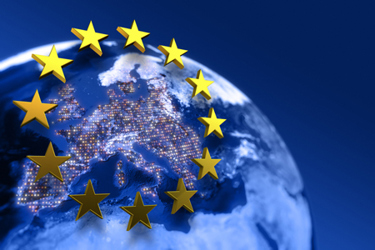How The Right Operating Model For EU MDR Compliance Can Support A Global Footprint
By Hilde Viroux and Maggie Chan (PA Consulting) and Dona O’Neil (Northeastern University)

In our previous article, “A Cost-Effective Approach To EU MDR Compliance,” we explained how manufacturers can navigate the cost compliance and risk of non-compliance with the EU MDR and concluded that manufacturers should focus on investing in solid process design, selecting the right technology, to develop a robust quality management system (QMS) aligned with an effective cost-reducing strategy. Alignment between the various functions, internal and external, supported by technology is the key to maintaining compliance in an efficient way. In this article, we will discuss how the right operating model can support EU MDR compliance, innovation, and international growth.
Global regulators are working together to align on requirements for medical devices in order to reduce discrepancies between regions. The IMDRF (International Medical Device Regulators Forum) states on its website “We strategically accelerate international medical device regulatory convergence to promote an efficient and effective regulatory model for medical devices that is responsive to emerging challenges while protecting and maximizing public health and safety.” Many countries are modelling their medical devices legislation on the European model, including, for example, the Australian Therapeutic Goods Administration, the Saudi FDA, and Health Canada. Even the U.S. FDA has recently aligned its QMSR (Quality Management System regulation) requirements with ISO 13485, the globally adopted ISO standard for a medical device quality management system.
Several global jurisdictions have aligned on a Medical Devices Single Audit Program (MDSAP), which allows the conduct of a single regulatory audit of a medical device manufacturer’s QMS to satisfy the requirements of these jurisdictions. Participating in the MDSAP program will not only reduce the number of site inspections but also will ensure the regulatory requirements of these jurisdictions are being met.
Despite the alignment when it comes to the QMS, global harmonized legislation for medical devices is still far away, and medical device regulatory requirements still vary between jurisdictions.
EU MDR has raised the bar in various areas. Apart from the focus on device design and usability, there is also a lot more emphasis on the collection of pre-market and post-market data. This puts a lot of pressure on manufacturers that may have been up-classified as part of the new regulation and manufacturers that are now required to have a robust clinical evidence strategy in the post-market phase as well. In addition, device documentation has to be kept up to date. This requires more intense collaboration of the regulatory function with clinical, safety, R&D, manufacturing, and quality.
Key Operating Model Considerations
Finding the right operating model that meets cost reduction objectives and still maintains adequate compliance with EU MDR and international regulations is no small task! As discussed in the previous article, many considerations need to be assessed as there isn’t a one-size-fits-all approach.
The main considerations are the company size, the diversity of the product portfolio, and the global footprint. For a company with a small product portfolio and sales only in the EU, you would expect that the operating model will center around a strong governance model for document updates and optimal use of the company’s own resources, with less focus on outsourcing of the EU MDR maintenance activities. However, according to a study published in May 2023, many smaller companies outsource the generation of the clinical evaluation report (CER) due to a lack of internal resources or internal expertise, rather than cost being the driving factor.
For large companies with an extended and diverse global product portfolio, the internal expertise related to clinical evaluation and post-market surveillance will not be the issue. The cost may be the main reason to outsource certain maintenance activities. In general, the operating model for an efficient EU MDR maintenance will be more complex in a larger company. Several aspects contribute to it, like the size and diversification of the product portfolio, which may be distributed over several business units with various degrees of independence from the corporate functions. To develop the optimal operating model, a company needs to carefully balance the in- and outsourcing of the activities to ensure sufficient knowledge stays in-house. The governance model including maintaining the update schedule for the post market activities can be centralized or decentralized, with clear delineation which activities have to be taken on by the business units or the corporate office. Developing the organizational model also will include an assessment and implementation of technology to support these activities in the post-market phase.
Evidence Generation
For example, the EU MDR increases the overall burden of clinical evidence. There may be opportunity to leverage this evidence generation to support other international regulatory requirements. This requires thorough planning, which should be built into the maintenance model and into the overall new product development (NPD) processes. Moreover, if companies assess EU MDR requirements as a compliance only activity, they miss the opportunity to leverage efficiencies to accelerate time to global market by aligning evidence requirements in multiple regions.
So, what does this look like in practice? How do you shift your mindset from remediation to innovation? Any time evidence is generated you can ask yourself, “If we need evidence to enter the EU, how does this help us meet other international regulatory and market adoption objectives”? What if there is a variety of device classifications across different regions, where one area may not currently require evidence generation as part of registration, but additional evidence would help to accelerate market adoption? To answer these questions, you need the right organizational structure to support not only EU MDR sustaining activities but also to be embedded into the NPD space.
The Regulatory Function
For example, having the regulatory function involved in the pre-market phase has the benefit that regulatory requirements are considered during design inputs. Aligning the regulatory strategy with the marketing strategy allows you to include the requirements from the target markets into the design input, which will avoid rework or additional testing in a later phase, with possible delay to market. The fact that EU MDR has raised the bar will help you meet more of the global requirements in a cost-efficient way, by, for example, reducing the number of clinical trials required, as the clinical trials for the EU may also serve for other jurisdictions.
In the post-market phase, the EU requires extensive data collection and literature searches. Those data can support the similar reports required by other jurisdictions, like the annual report for FDA. Understanding the interdependencies across multiple regions opens opportunity for efficiencies gained in process and resources.
Technology
Technology is key in managing EU MDR compliance. A regulatory information management (RIM) system becomes indispensable to maintain oversight of global registrations and deadlines for registration renewals. The use of AI will become increasingly important as we integrate its functionality into the writing and maintenance of EU MDR technical documentation. You’ll need to consider how to use it to its fullest potential to support and speed up data collection in pre- and post-market phases, freeing up resources to perform more strategic tasks and support innovation.
Conclusion
Obtaining EU MDR compliance is a major milestone as it allows a medical device manufacturer to focus again on innovation. However, companies need to be aware that more resources and efforts are required to maintain EU MDR compliance compared to the previous Medical Devices Directive (MDD). A well-thought-out operational model, with the right governance, resources, and technology, will support the ongoing compliance as well as foster innovation and support a global footprint.
About the Authors:
 Hilde Viroux is a medtech expert at PA Consulting and is an expert on the European Medical Devices Regulation. She has broad experience in regulations, quality, manufacturing, supply chain, and project management in the pharmaceutical and medical device industry. She has an MSc in medical technology regulatory affairs from Cranfield University in the U.K. and a BS in biochemistry engineering.
Hilde Viroux is a medtech expert at PA Consulting and is an expert on the European Medical Devices Regulation. She has broad experience in regulations, quality, manufacturing, supply chain, and project management in the pharmaceutical and medical device industry. She has an MSc in medical technology regulatory affairs from Cranfield University in the U.K. and a BS in biochemistry engineering.
 Maggie Chan is a life sciences and regulatory expert at PA Consulting. She focuses on leading process and operation improvement for medical device and pharmaceutical companies. She has led labeling remediation and e-labeling process design projects in compliance with global medical devices regulation for both implantable and non-implantable medical devices. She has been supporting companies by building capabilities and designing processes to ensure they comply with ISO 13485, EU MDR, 21 CFR, etc., in line with the product portfolio. She has a Master of Science in law from Northwestern Pritzker School of Law in the U.S. and a BS in biology.
Maggie Chan is a life sciences and regulatory expert at PA Consulting. She focuses on leading process and operation improvement for medical device and pharmaceutical companies. She has led labeling remediation and e-labeling process design projects in compliance with global medical devices regulation for both implantable and non-implantable medical devices. She has been supporting companies by building capabilities and designing processes to ensure they comply with ISO 13485, EU MDR, 21 CFR, etc., in line with the product portfolio. She has a Master of Science in law from Northwestern Pritzker School of Law in the U.S. and a BS in biology.
 Dona O’Neil is an industry EU MDR expert and an adjunct professor for Northeastern University’s master’s program in regulatory affairs. She has experience developing and implementing EU MDR clinical evidence requirements across many therapeutic areas and all device classifications. O’Neil has an MPH (healthy policy concentration) from George Washington University and is certified as a clinical research professional by SOCRA.
Dona O’Neil is an industry EU MDR expert and an adjunct professor for Northeastern University’s master’s program in regulatory affairs. She has experience developing and implementing EU MDR clinical evidence requirements across many therapeutic areas and all device classifications. O’Neil has an MPH (healthy policy concentration) from George Washington University and is certified as a clinical research professional by SOCRA.
